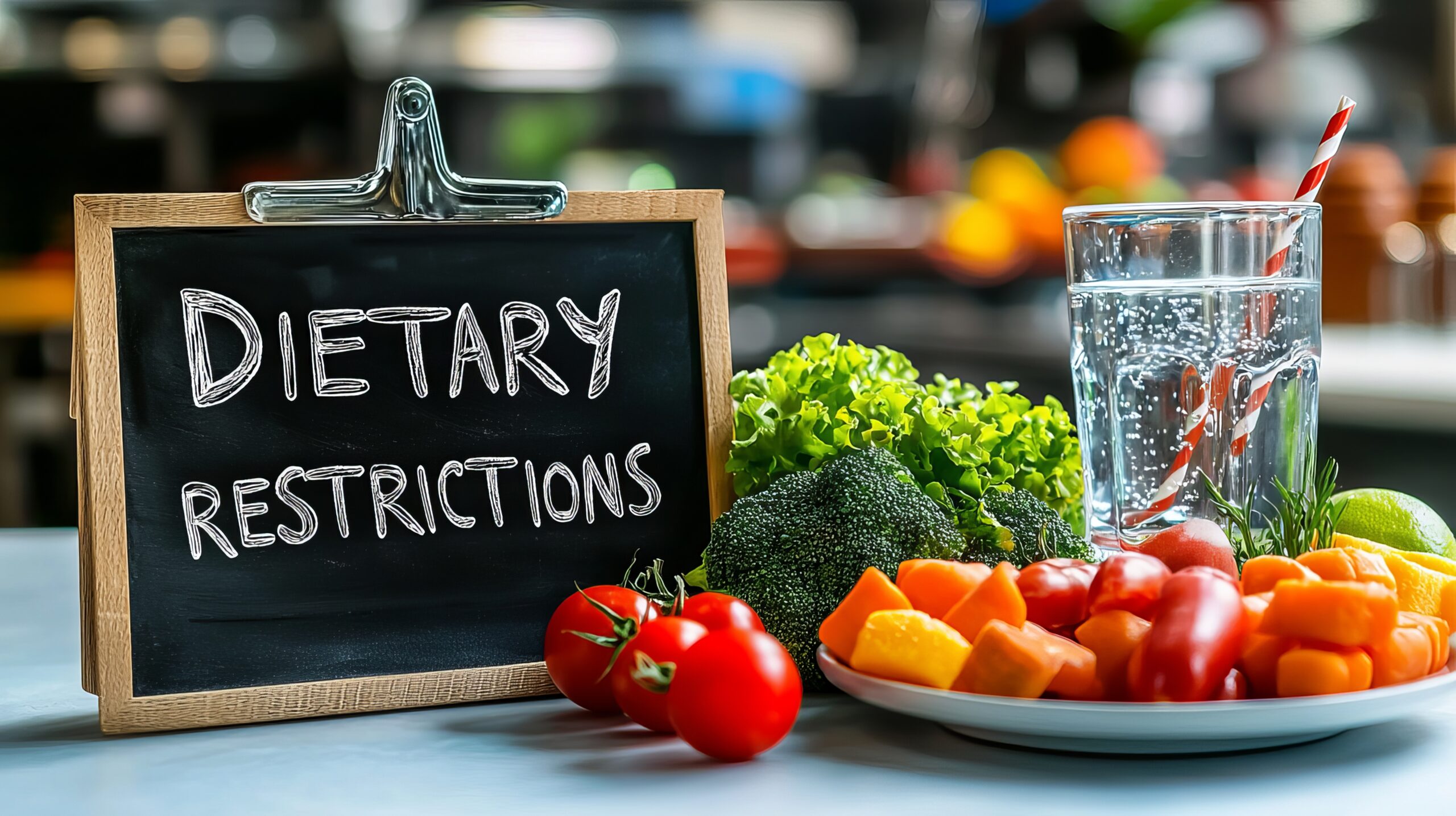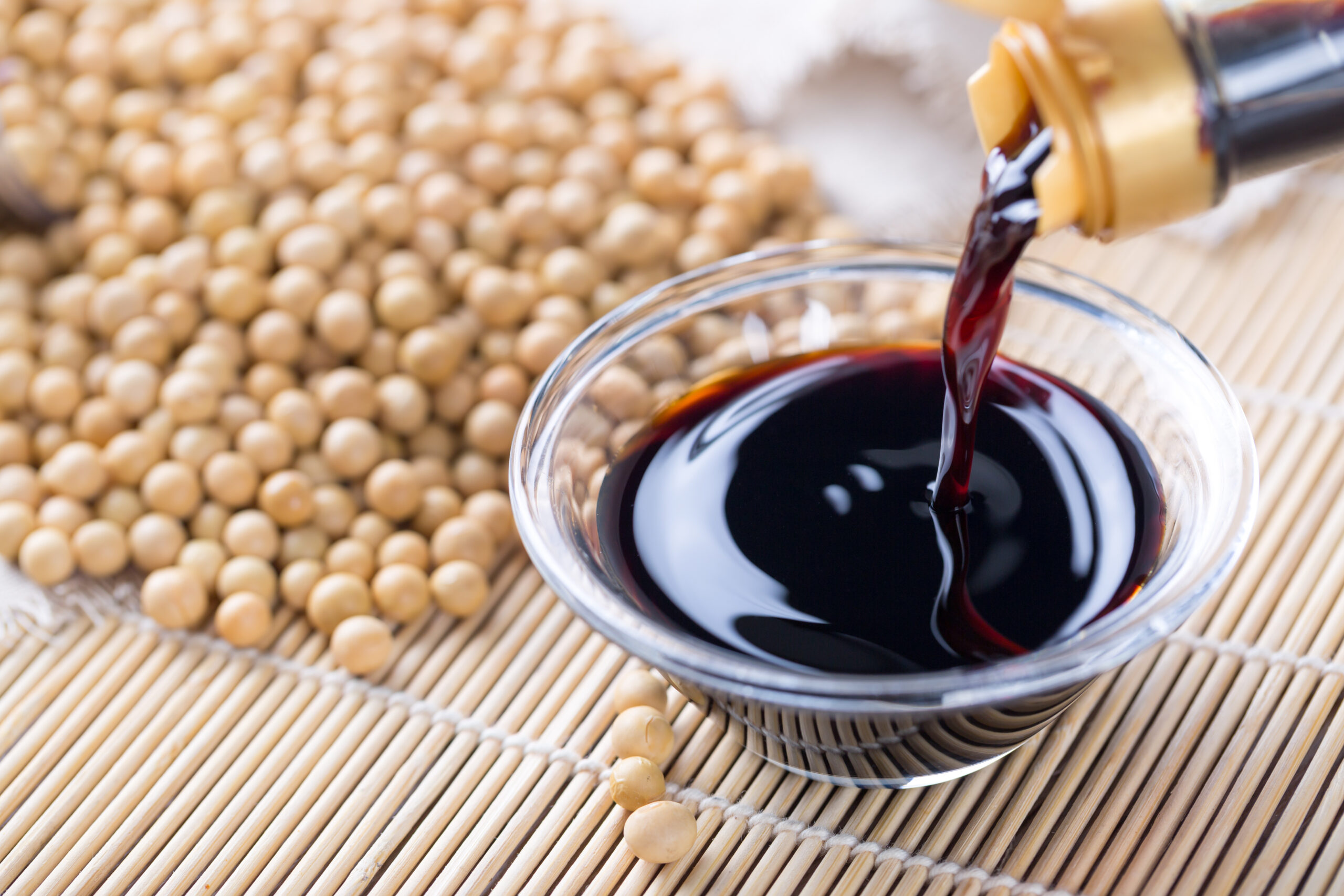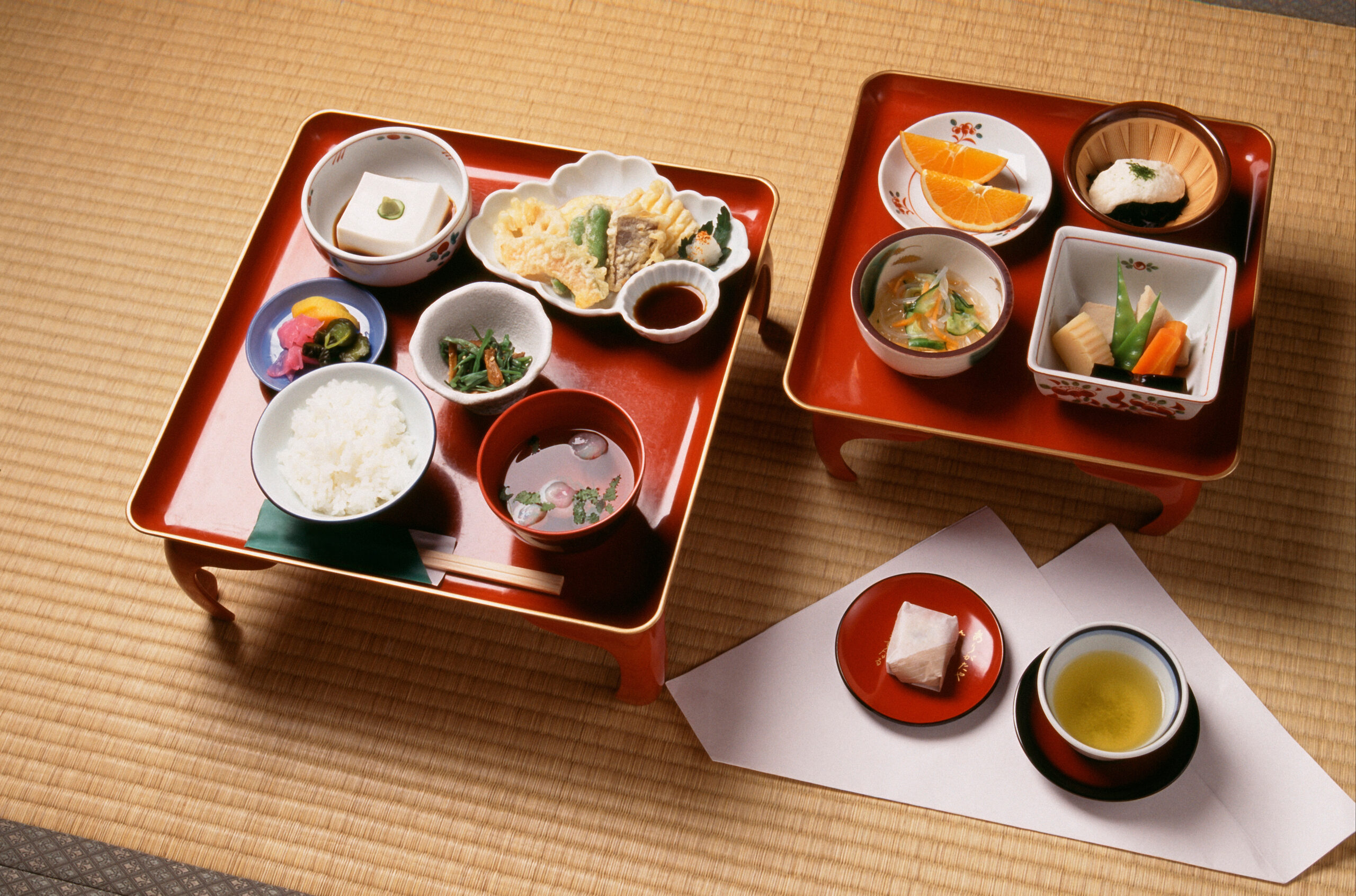The Ultimate Guide to Eating with Dietary Restrictions in Japan for Foreigners: Vegetarian, Vegan, Halal & Allergies

Moving to Japan is such an amazing opportunity, but if you have dietary restrictions, it can feel like a constant source of worry. How will you find restaurants that cater to your needs? How can you possibly understand those complicated Japanese menus?
You’re probably wondering, “Is it even possible to truly enjoy the incredible food culture here without constantly stressing about what you can and can’t eat?” You might be feeling this way.
The truth is, navigating the Japanese food scene with dietary restrictions doesn’t have to be overwhelming. With a few key strategies and the right information, you can confidently find delicious and suitable meals, allowing you to fully embrace your Japanese adventure.
In this ultimate guide, we will help you navigate the Japanese food scene with confidence, whether you’re vegetarian, vegan, halal, have food allergies, or have other dietary needs. We’ll cover the essential knowledge and practical strategies that will empower you to eat out, shop for groceries, and ultimately enjoy a worry-free food journey in Japan.
Mastering Essential Japanese Phrases for Dietary Needs
Exploring the food scene in a new country becomes much easier when you can communicate your basic needs. While you might find some English spoken in tourist hotspots in Japan, knowing a few key Japanese phrases related to dietary restrictions can truly make a difference in having a worry-free eating experience. This section will equip you with the essential vocabulary and phrases to clearly explain what you can and cannot eat.
Basic Phrases for Common Dietary Restrictions
One of the first steps is to be able to state your dietary restrictions clearly. Here are some fundamental phrases you can use:
- I am vegetarian. (私はベジタリアンです。 – Watashi wa bejitarian desu.)
- This is a direct way to inform someone that you do not eat meat or fish.
- I am vegan. (私はビーガンです。 – Watashi wa biigan desu.)
- Use this if you avoid all animal products, including dairy, eggs, and honey.
- I don’t eat meat. (私は肉を食べません。 – Watashi wa niku wo tabemasen.)
- This is useful if your restriction primarily involves meat.
- I don’t eat fish. (私は魚を食べません。 – Watashi wa sakana wo tabemasen.)
- Important to specify, as fish is a staple in Japanese cuisine.
- I have a [allergy]. (私は[アレルギー]があります。 – Watashi wa [arerugī] ga arimasu.)
- You will need to replace “[allergy]” with the specific allergy. We will cover common allergies later in this section.
It’s also helpful to know how to ask if a dish contains certain ingredients:
- Does this contain meat? (これは肉が入っていますか? – Kore wa niku ga haitte imasu ka?)
- Does this contain fish? (これは魚が入っていますか? – Kore wa sakana ga haitte imasu ka?)
- Does this contain eggs? (これは卵が入っていますか? – Kore wa tamago ga haitte imasu ka?)
- Does this contain dairy? (これは乳製品が入っていますか? – Kore wa nyūseihin ga haitte imasu ka?)
These basic phrases will allow you to communicate your primary dietary needs in various situations, from restaurants to convenience stores.
How to Ask About Ingredients
Sometimes, a simple statement might not be enough, especially when dealing with complex dishes or hidden ingredients. Being able to ask more specific questions is crucial.

- What ingredients are in this? (これには何が入っていますか? – Kore ni wa nani ga haitte imasu ka?)
- This is a general question to understand the components of a dish.
- Is there [ingredient] in this? (これには[材料]が入っていますか? – Kore ni wa [zairyō] ga haitte imasu ka?)
- Replace “[ingredient]” with the specific ingredient you want to inquire about, such as “peanut” (ピーナッツ – pīnattsu) or “wheat” (小麦 – komugi).
- Can you make this without [ingredient]? (これを[材料]なしで作ってもらえますか? – Kore wo [zairyō] nashi de tsukutte moraemasu ka?)
- Use this phrase if you find a dish you like but need to request the omission of a specific ingredient.
Understanding how dishes are prepared is also important. For vegetarians and vegans, the presence of dashi (だし), a soup stock commonly made from fish flakes (かつおぶし – katsuobushi) or seaweed (昆布 – konbu), is a key concern.
- Is dashi used in this? (これにはだしが使われていますか? – Kore ni wa dashi ga tsukawarete imasu ka?)
- This is a vital question for those avoiding fish.
Showing an Allergy Card
For individuals with severe allergies, a simple phrase might not be sufficient to convey the seriousness of their condition. Creating an allergy card (アレルギーカード – arerugī kādo) written in Japanese can be incredibly helpful. This card can clearly state your allergies and any necessary precautions.
You can create a physical card to carry with you or have the information readily available on your phone. To make your allergy card most effective, consider including the following:
- Your name (optional, but can be helpful in emergencies).
- A clear statement like, “I have a severe allergy to [specific food].” (私は[特定の食品]に重度のアレルギーがあります。 – Watashi wa [tokutei no shokuhin] ni jūdo no arerugī ga arimasu.)
- A list of all your allergies in Japanese (e.g., 卵 – tamago for egg, 乳製品 – nyūseihin for dairy products, 小麦 – komugi for wheat, えび – ebi for shrimp, かに – kani for crab, そば – soba for buckwheat, 落花生 – rakkaisei for peanut). You can find accurate translations on reputable online dictionaries or translation services.
- A request for the staff to be careful when preparing your food: “Please be very careful when preparing my food to avoid any cross-contamination.” (私の食事を準備する際は、混入がないように十分注意してください。 – Watashi no shokuji wo junbi suru sai wa, konnyū ga nai yō ni jūbun chūi shite kudasai.)
- A polite closing statement like, “Thank you for your understanding.” (ご理解ありがとうございます。 – Go-rikai arigatō gozaimasu.)
Presenting this card to restaurant staff or shopkeepers can significantly reduce the risk of miscommunication and ensure your dietary needs are taken seriously.
Navigating Restaurant Menus with Language
Understanding basic Japanese characters (kanji – 漢字), phonetic scripts (hiragana – ひらがな and katakana – カタカナ), and common food-related vocabulary can greatly assist in navigating restaurant menus.
- Menu (メニュー – menū) is often written in katakana, which is used for foreign loanwords.
- Look for characters related to meat:
- 肉 (にく – niku) – Meat (general term)
- 牛肉 (ぎゅうにく – gyūniku) – Beef
- 豚肉 (ぶたにく – butaniku) – Pork
- 鶏肉 (とりにく – toriniku) – Chicken
- Characters related to fish:
- 魚 (さかな – sakana) – Fish (general term)
- 鮪 (まぐろ – maguro) – Tuna
- 鮭 (さけ – sake) – Salmon
- 海老 (えび – ebi) – Shrimp
- Characters related to other common allergens:
- 卵 (たまご – tamago) – Egg
- 乳 (にゅう – nyū) – Milk/Dairy
- 小麦 (こむぎ – komugi) – Wheat
- 大豆 (だいず – daizu) – Soybean (common in soy sauce and miso)
Many restaurants, especially in tourist areas, now offer menus with English translations or pictures. However, being able to recognize these basic characters can be invaluable in situations where English menus are not available or when trying local eateries.
By mastering these essential Japanese phrases and being prepared with an allergy card if needed, you can significantly enhance your ability to communicate your dietary restrictions and enjoy a more relaxed and fulfilling culinary experience in Japan.
Leveraging Technology: Top Apps and Online Resources
In today’s digital age, technology offers invaluable tools for navigating dietary restrictions in Japan. Several apps and online resources are specifically designed to help foreigners find suitable restaurants, understand food labels, and connect with others who share similar dietary needs. Utilizing these resources can significantly reduce the stress of eating out and grocery shopping in a new environment.
Must-Have Apps for Finding Dietary-Friendly Restaurants
Several mobile applications cater to individuals with dietary restrictions, making it easier to locate restaurants that offer suitable options in Japan.
- HappyCow: This global app is a favorite among vegetarians and vegans. It allows users to search for vegan, vegetarian, and health food restaurants worldwide, including Japan. You can filter by dietary preference and read reviews from other users to get insights into the menu and how well the restaurant caters to specific needs.
- Vegewel: Specifically focused on Japan, Vegewel is a comprehensive platform for finding vegan and vegetarian restaurants, cafes, and stores. It provides detailed information about menu items, ingredients, and even allergy information in some cases. The app and website are available in English, making it a valuable resource for non-Japanese speakers.
- Halal Gourmet Japan: For those requiring halal options, this app and website are essential. They list halal-certified restaurants and stores across Japan, providing details about the type of cuisine and halal certification. Users can also find prayer spaces and other helpful information for Muslims living in or visiting Japan.
These apps often allow you to save your favorite places, read user reviews, and get directions, making them powerful tools in your pocket for navigating the Japanese food scene.
Online Communities and Forums for Expats with Dietary Needs
Connecting with others who have similar dietary restrictions and are living in or have traveled to Japan can provide invaluable support and advice. Online communities and forums offer a space to share experiences, ask questions, and discover hidden gems that cater to specific needs.
- Facebook Groups: Numerous Facebook groups are dedicated to topics like “Vegetarians in Japan,” “Vegans in Japan,” “Halal Foodies Japan,” and “Food Allergies in Japan.” These groups are active communities where members share restaurant recommendations, tips for reading labels, and advice on how to communicate dietary needs effectively.
- Reddit: Subreddits like r/JapanTravel and r/livinginjapan often have threads where users discuss dietary restrictions and share helpful resources. You can search for specific keywords or post your own questions to get advice from the community.
- Dedicated Forums: Websites like GaijinPot Forums or Japan Today Forums have sections where expats discuss various aspects of life in Japan, including food and dietary needs. These forums can be a great place to find detailed information and personal recommendations.
Participating in these online communities can provide not only practical tips but also a sense of belonging and support as you navigate your dietary journey in Japan.
Using Translation Tools Effectively
Language barriers can be a significant hurdle when dealing with dietary restrictions. Translation tools can be incredibly helpful in understanding menus, food labels, and communicating with restaurant staff.
- Google Translate: This widely used app allows you to translate text from images (like menus) or spoken words. It can be a quick and convenient way to get a general understanding of ingredients or to translate your dietary requests into Japanese. However, it’s important to note that translations might not always be perfectly accurate, especially with nuanced culinary terms.
- Yomiwa: This app specializes in Japanese and can be particularly useful for reading kanji on menus and food packaging. You can point your camera at the text, and it will provide instant translations and definitions.
- Voice Translation Apps: Several apps offer real-time voice translation, which can be helpful when speaking with restaurant staff. While these can be useful for basic communication, it’s always best to learn key phrases beforehand for clarity.
While translation tools are valuable aids, it’s still recommended to learn some basic Japanese phrases related to your dietary needs to ensure clear and accurate communication.
Restaurant Review Websites with Dietary Filters
General restaurant review websites can also be helpful if they offer filters for dietary restrictions.
- TripAdvisor: This popular travel website allows you to search for restaurants in Japan and often includes filters for “Vegetarian Friendly,” “Vegan Options,” and “Gluten Free Options.” User reviews can also provide insights into how well a restaurant caters to specific dietary needs.
- Gurunavi and Tabelog: These are two of the most popular restaurant review websites in Japan. While primarily in Japanese, some restaurants on these platforms may have English menus or information available. Using browser translation tools can help you navigate these sites and find potentially suitable options.
By combining these technological tools and online resources, you can significantly enhance your ability to find and enjoy food that meets your dietary requirements in Japan, making your experience much more convenient and stress-free.

Know Your Enemy: Understanding Common Hidden Ingredients in Japanese Cuisine
Navigating dietary restrictions in Japan requires not only the ability to communicate your needs but also an understanding of common ingredients that might be hidden in seemingly safe dishes. Japanese cuisine, while diverse and delicious, often incorporates elements that can be problematic for vegetarians, vegans, and those with allergies. Being aware of these potential pitfalls is crucial for a worry-free food journey.
The Ubiquitous Dashi: What It Is and How to Avoid It
Dashi (だし) is a fundamental soup stock in Japanese cooking, providing a savory umami flavor to a wide array of dishes. Traditionally, dashi is most commonly made from katsuobushi (鰹節), which are dried bonito (a type of fish) flakes. It can also be made from other fish, such as dried sardines (niboshi – 煮干し). For vegetarians and vegans, the presence of fish-based dashi is a primary concern.
While some vegetarian versions of dashi exist, made from kombu (昆布 – kelp) or shiitake mushrooms (shiitake – 椎茸), it’s essential to confirm which type is used. Many standard restaurant dishes, from miso soup (miso shiru – 味噌汁) to noodle broths and simmered dishes (nimono – 煮物), often contain fish-based dashi.
How to Avoid It:
- Always ask: Use the phrase “これにはだしが使われていますか?” (Kore ni wa dashi ga tsukawarete imasu ka? – Is dashi used in this?) when ordering.
- Look for vegetarian/vegan indicators: Some restaurants are starting to mark their menus with symbols indicating vegetarian or vegan options.
- Be cautious with seemingly vegetarian dishes: Vegetable tempura (yasai tempura – 野菜天ぷら) batter or agedashi tofu (agedashi dōfu – 揚げ出し豆腐) broth can sometimes contain dashi.
- Consider restaurants specializing in vegetarian cuisine: These establishments are less likely to use fish-based dashi.
Common Meat and Fish-Based Ingredients to Watch Out For
Beyond dashi, several other meat and fish products are commonly used in Japanese cuisine and might not always be obvious.
- Minced Meat Miso (Nikumiso – 肉味噌): Often used as a topping for noodles or rice dishes, this can be made from pork or beef.
- Fish Flakes (Katsuobushi – 鰹節): As mentioned, used in dashi but also as a topping for dishes like okonomiyaki (okonomiyaki – お好み焼き) and takoyaki (takoyaki – たこ焼き).
- Small Dried Fish (Chirimen Jako – ちりめん雑魚): These tiny dried fish are sometimes added to salads or vegetable side dishes.
- Animal-Based Fats: Some dishes might be cooked using lard or other animal fats.
How to Avoid Them:
- Inquire about toppings: If you see flakes on a dish, ask if they are fish (削り節ですか? – kezuribushi desu ka?).
- Check descriptions carefully: Look for mentions of meat or fish in the menu description.
- When in doubt, ask: It’s always better to confirm the ingredients with the staff.
Understanding Soy Sauce and Other Potential Gluten Sources
For individuals with gluten sensitivities or celiac disease, soy sauce (shōyu – 醤油), a staple in Japanese cooking, is a key concern as it typically contains wheat.
- Regular Soy Sauce: Most common soy sauces in Japan are made with soybeans, wheat, salt, and a fermenting agent.
- Tamari Soy Sauce (Tamari Shōyu – たまり醤油): Traditionally, tamari is a type of soy sauce made with little to no wheat. However, it’s essential to check the label as some modern versions may contain wheat.
- Wheat Flour (Komugiko – 小麦粉): Used in various dishes like tempura batter, okonomiyaki, and some noodle types (like udon – うどん).
- Miso (Miso – 味噌): While primarily made from fermented soybeans, some types of miso can contain barley or other grains that contain gluten.

How to Avoid Gluten:
- Ask for wheat-free soy sauce: Some restaurants may offer gluten-free soy sauce (guruten furī shōyu – グルテンフリー醤油).
- Inquire about batter ingredients: If ordering fried items, ask if they are made with wheat flour.
- Be mindful of noodle types: Choose rice noodles (bifun – ビーフン) or buckwheat noodles (soba – 蕎麦, but be aware some contain wheat as a binder).
- Check miso soup ingredients: If you are highly sensitive, it’s best to inquire about the type of miso used.
Hidden Dairy in Japanese Dishes
While traditional Japanese cuisine doesn’t heavily rely on dairy, its use has increased over time, particularly in desserts and some modern adaptations of classic dishes.
- Milk (Gyūnyū – 牛乳): Found in some breads, desserts, and drinks.
- Cream (Kurīmu – クリーム): Used in cakes, pastries, and sometimes in sauces.
- Butter (Batā – バター): Used in cooking some dishes or served with bread.
- Cheese (Chīzu – チーズ): Less common in traditional dishes but found in some modern interpretations.
How to Avoid Dairy:
- Be cautious with desserts: Always inquire about the ingredients in cakes, ice cream (aisu kurīmu – アイスクリーム), and other sweets.
- Check bread ingredients: If bread is served, ask if it contains milk or butter.
- Inquire about sauces: Some sauces might contain cream or other dairy products.
By being aware of these common hidden ingredients and knowing how to ask about them, you can significantly reduce the chances of accidentally consuming something that doesn’t align with your dietary needs and enjoy the diverse flavors of Japanese cuisine with greater peace of mind.
Don’t Be Afraid to Ask: Communicating Clearly at Restaurants and Shops
While learning key Japanese phrases and understanding hidden ingredients are crucial, direct communication with restaurant staff and shopkeepers is often the most effective way to ensure your dietary needs are met. In Japan, service staff are generally very helpful and willing to accommodate requests to the best of their ability. This section will provide guidance on how to communicate clearly and politely about your dietary restrictions.
Preparing Questions in Advance
Before you even step into a restaurant or approach a shopkeeper, it can be beneficial to prepare a few key questions in advance. This can help you feel more confident and ensure you don’t forget any important inquiries.
- Write down your restrictions: Create a simple note in Japanese outlining your dietary needs.
- For example: “私はベジタリアンです。肉、魚介類は一切食べません。” (Watashi wa bejitarian desu. Niku, gyokairui wa issai tabemasen. – I am vegetarian. I do not eat any meat or seafood.) or “私は[特定の食品]に重度のアレルギーがあります。” (Watashi wa [tokutei no shokuhin] ni jūdo no arerugī ga arimasu. – I have a severe allergy to [specific food].) You can show this note to the staff.
- Identify specific ingredients you need to avoid: If you know certain ingredients are often problematic (like dashi or wheat), write down the Japanese names so you can easily ask about them.
- Research common dishes: If you plan to try a specific Japanese dish, research its typical ingredients beforehand. This will help you formulate targeted questions.
- For example, if you want to try tempura, you might ask, “この天ぷらの衣には卵や乳製品は入っていますか?” (Kono tenpura no koromo ni wa tamago ya nyūseihin wa haitte imasu ka? – Does the batter for this tempura contain eggs or dairy products?).
Having these questions prepared will make the communication process smoother and more efficient.
Polite Ways to Inquire About Ingredients
When asking about ingredients, politeness is key in Japanese culture. Using respectful language will make the staff more receptive to your requests. Here are some polite phrases you can use:
- すみません、お伺いしてもいいですか? (Sumimasen, oukagai shitemo ii desu ka? – Excuse me, may I ask a question?) – Use this to get the staff’s attention politely.
- ちょっとお尋ねしたいのですが。 (Chotto otazune shitai no desu ga. – I’d like to ask you something.) – Another polite way to start an inquiry.
- ~は入っていますか? (~ wa haitte imasu ka? – Does it contain ~?) – Use this to ask about specific ingredients. Remember to use polite language before this phrase.
- For example, “すみません、このカレーには肉は入っていますか?” (Sumimasen, kono karē ni wa niku wa haitte imasu ka? – Excuse me, does this curry contain meat?).
- ~なしで作っていただけますか? (~ nashi de tsukutte itadakemasu ka? – Could you make this without ~?) – Use this to request the omission of a specific ingredient.
- For example, “すみません、このラーメンをネギなしで作っていただけますか?” (Sumimasen, kono rāmen wo negi nashi de tsukutte itadakemasu ka? – Excuse me, could you make this ramen without green onions?).
Remember to speak clearly and slowly, and don’t hesitate to repeat your question if needed.
What to Do If There’s a Misunderstanding
Despite your best efforts, misunderstandings can sometimes occur. If you suspect that your dietary needs haven’t been fully understood or if you receive food that you believe contains a restricted ingredient, it’s important to address the situation calmly and politely.
- Explain the issue clearly: Use simple language and point to the specific ingredient if possible.
- For example, if you ordered a vegetarian dish but see meat, you can say, “すみません、これは肉が入っています。私は肉を食べません。” (Sumimasen, kore wa niku ga haitte imasu. Watashi wa niku o tabemasen. – Excuse me, this contains meat. I don’t eat meat.).
- Show your allergy card: If you have an allergy card, present it to the staff to ensure they understand the severity of the situation.
- Ask for clarification: If you are unsure about an ingredient, don’t hesitate to ask for more details.
- You can say, “これは何ですか?” (Kore wa nan desu ka? – What is this?) while pointing to the item in question.
- Be patient and understanding: Remember that language barriers can sometimes lead to confusion. Be patient and allow the staff to rectify the situation.
In most cases, restaurant staff will be happy to help and ensure you receive a meal that meets your dietary requirements.
Asking About Preparation Methods
For some dietary restrictions, particularly veganism and severe allergies, the preparation method of the food is just as important as the ingredients themselves. Cross-contamination can occur if food is cooked on the same surfaces or with the same utensils as restricted items.
- Is this cooked separately from meat/fish? (これは肉や魚とは別に調理されていますか? – Kore wa niku ya sakana to wa betsu ni chōri sarete imasu ka?) – Useful for vegetarians and vegans concerned about cross-contamination.
- Are separate utensils used for my dish to avoid contamination with [specific allergen]? (私の料理には、[特定の食品]の混入を避けるために、別の調理器具を使用していますか? – Watashi no ryōri ni wa, [ttokutei no shokuhin] no konnyū wo sakeru tame ni, betsu no chōri kigu wo shiyō shite imasu ka?) – Important for individuals with severe allergies.
- Is this deep-fried in the same oil as [allergen]? (これは[アレルギー源]と同じ油で揚げていますか? – Kore wa [arerugī gen] to onaji abura de agete imasu ka?) – Crucial for those with food allergies, especially to items like peanuts or shellfish.
Asking these questions, while it might seem detailed, can provide crucial information and help you make informed decisions about what to eat.
By being prepared with questions, communicating politely and clearly, and not being afraid to seek clarification, you can confidently navigate dining experiences in Japan and ensure your dietary needs are respected.
Smart Shopping: Finding the Right Groceries for Your Dietary Needs
For those planning to cook their own meals in Japan, knowing how to navigate Japanese supermarkets and identify suitable ingredients is crucial. While the layout and product offerings might differ from what you’re used to, with a little guidance, you can confidently find groceries that meet your dietary requirements. This section will provide tips on navigating Japanese supermarkets, understanding food labels, and exploring alternative shopping options.
Navigating Japanese Supermarkets: Aisle by Aisle Guide
Japanese supermarkets, or sūpā (スーパー), generally organize their products in a similar fashion to supermarkets in other countries, but there might be some differences to be aware of.

- Produce Section (Yasai Uriba – 野菜売場): Here you’ll find a wide variety of fresh vegetables (yasai – 野菜) and fruits (kudamono – 果物). Look for clear labeling, although English might be limited. Knowing the Japanese names for common vegetables and fruits can be very helpful.
- Meat Section (Niku Uriba – 肉売場): This section will typically have separate areas for beef (gyūniku – 牛肉), pork (butaniku – 豚肉), and chicken (toriniku – 鶏肉). The labeling will usually be in Japanese.
- Fish Section (Sakana Uriba – 魚売場): Expect a wide array of fresh and frozen fish (sakana – 魚) and seafood (gyokairui – 魚介類). Again, labels will primarily be in Japanese.
- Dairy Section (Nyūseihin Uriba – 乳製品売場): Here you’ll find milk (gyūnyū – 牛乳), yogurt (yoguruto – ヨーグルト), cheese (chīzu – チーズ), and other dairy products (nyūseihin – 乳製品). Look for the kanji for milk (乳 – nyū) or the term “dairy-free” (乳製品不使用 – nyūseihin fushiyō) if needed.
- Tofu and Soy Products (Tōfu Uriba – 豆腐売場): Japan has a rich culture of tofu (tōfu – 豆腐) and other soy products like nattō (納豆 – fermented soybeans) and aburaage (油揚げ – deep-fried tofu pouches). These are often good options for vegetarians and vegans.
- Noodles and Pasta (Men Uriba – 麺売場): You’ll find various types of noodles (men – 麺) such as udon (うどん), soba (蕎麦), ramen (ラーメン), and rice noodles (bīfun – ビーフン). Be mindful of ingredients like wheat in udon and some soba varieties.
- Rice and Grains (Kome Uriba – 米売場): A staple in Japanese cuisine, you’ll find different types of rice (kome – 米).
- Condiments and Spices (Chōmiryō Uriba – 調味料売場): This section will have soy sauce (shōyu – 醤油), miso (miso – 味噌), cooking oils, and various spices. Look for gluten-free soy sauce options if needed.
- International Foods: Larger supermarkets might have a section dedicated to imported goods, where you might find familiar items and brands from your home country, including some with specific dietary labels in English.
- Frozen Foods (Reitō Shokuhin – 冷凍食品): This section offers a variety of frozen meals and ingredients.
Taking your time to explore the different sections and familiarize yourself with the layout will make your grocery shopping experience much smoother.
Understanding Food Labels: Key Kanji and Vocabulary
Being able to decipher Japanese food labels is essential for identifying ingredients and potential allergens. While it might seem daunting at first, learning a few key kanji and vocabulary can be incredibly helpful.
- 原材料名 (Genzairyōmei): Ingredients list. This section generally lists all the ingredients in the product. However, in some cases, particularly with minor components of complex ingredients or processing aids, you might occasionally see a general term like その他 (sonota) or functional names for additives.
- アレルギー物質 (Arerugī Busshitsu): Allergens. This section often highlights specific allergens.
- Common Allergens (with kanji/katakana and romaji):
- 卵 (たまご – tamago) – Egg
- 乳 (にゅう – nyū) – Milk/Dairy
- 小麦 (こむぎ – komugi) – Wheat
- そば (soba) – Buckwheat
- 落花生 (らっかせい – rakkaisei) – Peanut
- えび (ebi) – Shrimp
- かに (kani) – Crab
- Other helpful terms:
- 不使用 (ふしよう – fushiyō) – Not used/Does not contain
- 無添加 (むてんか – mutenka) – No additives
- 植物性 (しょくぶつせい – shokubutsusei) – Plant-based
- 動物性 (どうぶつせい – dōbutsusei) – Animal-based
- Common Allergens (with kanji/katakana and romaji):
Many food products now include a specific allergy information section, often with icons or clear labeling of major allergens. Familiarizing yourself with these symbols and key terms will greatly assist you in making informed choices.
Online Grocery Shopping Options for Foreigners
For added convenience, especially when first arriving in Japan or if you live in a less accessible area, online grocery shopping can be a great option. Several services cater to foreigners and may offer English interfaces or a wider selection of imported goods.
- Amazon Japan: Offers a wide range of groceries, including international brands and some with English product descriptions.
- Costco Japan Online: If you have a Costco membership, their online store offers bulk groceries and some imported items.
- National Azabu Supermarket Online: This supermarket specializes in international foods and has an English website.
- Seijo Ishii Online Store: A higher-end Japanese supermarket with a good selection of imported and domestic specialty foods, including organic and some dietary-specific items. Their website is mostly in Japanese, but it’s a well-regarded option.
- Kaldi Coffee Farm Online Store: While known for coffee, Kaldi also has a wide variety of imported foods and ingredients, including some that cater to specific dietary needs. Their website is in Japanese.
These online options can save you time and effort, especially when you’re still getting familiar with local supermarkets and Japanese food labels.
Exploring Specialty Stores for Vegetarian, Vegan, and Halal Products
In addition to regular supermarkets, you might find specialty stores that cater to specific dietary needs.
- Natural Food Stores (Shizen Shoku Hin Ten – 自然食品店): These stores often carry organic and natural products, including vegetarian and vegan options that might be harder to find in regular supermarkets.
- Import Stores (Yunyu Shōten – 輸入商店): These stores stock a variety of international food products, which can be helpful for finding specific ingredients or brands that cater to your dietary needs.
- Halal Food Stores: In areas with a significant Muslim population, you might find stores specifically selling halal meat and other halal products. Websites like Halal Gourmet Japan can help you locate these stores.
Exploring these specialty stores can provide a wider selection of products that align with your dietary restrictions.
By understanding how Japanese supermarkets are organized, learning key vocabulary for food labels, utilizing online shopping options, and exploring specialty stores, you can confidently find the groceries you need to prepare delicious and safe meals in Japan.
Vegetarian and Vegan Hotspots in Japan
While navigating the general food scene with vegetarian or vegan restrictions requires careful attention, Japan also boasts a growing number of establishments that specifically cater to these dietary preferences. Knowing where to look can significantly expand your dining options and allow you to enjoy delicious Japanese cuisine without compromise.
Finding Dedicated Vegetarian and Vegan Restaurants in Major Cities
Major cities in Japan, particularly Tokyo, Osaka, and Kyoto, have seen an increase in the number of dedicated vegetarian and vegan restaurants in recent years. These establishments offer a wide range of cuisines, from traditional Japanese dishes reimagined in plant-based versions to international flavors.
- Tokyo (東京): Areas like Shibuya and Shinjuku have a notable concentration of vegan and vegetarian restaurants. Websites like Vegewel and HappyCow are excellent resources for finding these spots, often providing detailed menus and reviews in English. You can find everything from vegan ramen and sushi to plant-based burgers and desserts.
- Kyoto (京都): Known for its traditional Buddhist cuisine (shōjin ryōri – 精進料理), Kyoto offers numerous vegetarian options. Beyond shojin ryori, you can also find modern vegan cafes and restaurants that blend traditional Japanese ingredients with innovative plant-based cooking techniques.
- Osaka (大阪): Similar to Tokyo, Osaka has a growing vegan and vegetarian scene, with many restaurants offering creative and flavorful plant-based dishes. Explore areas like Namba and Umeda for diverse options.
When searching for dedicated vegetarian or vegan restaurants, look for clear signage in English or Japanese (e.g., ベジタリアン – bejitarian, ビーガン – biigan). Don’t hesitate to check online reviews and menus beforehand to ensure the restaurant meets your specific needs.
Exploring Shojin Ryori (Buddhist Vegetarian Cuisine)
For a truly unique and traditional Japanese vegetarian experience, seek out shōjin ryōri (精進料理). This Buddhist temple cuisine is entirely plant-based and focuses on seasonal vegetables, tofu, and other vegetarian ingredients prepared with meticulous attention to detail.
- Kyoto is a prime location: Many temples in Kyoto, particularly around the Arashiyama (嵐山) and Higashiyama (東山) areas, offer shojin ryori meals, often in serene and beautiful settings.
- Kanazawa (金沢) and Nara (奈良): These cities also have temples that serve shojin ryori. Options in Kanazawa and Nara are limited compared to Kyoto. Confirm availability in advance.
- Ryokans (traditional Japanese inns): Some ryokans, especially those located near temples, might offer shojin ryori as part of their meal options. However, as shojin ryori is not a standard offering at most ryokans, it’s always best to check with the accommodation beforehand if it’s available as part of their meal plan when making your reservation or before your visit.
These meals are often served in tranquil temple settings, such as garden-view rooms.
Shojin ryori menus change monthly to reflect seasonal produce. Autumn mushrooms, winter root vegetables, and spring bamboo shoots are highlights. Shojin ryori is not only a delicious and healthy meal but also a cultural experience that provides insight into Buddhist philosophy and Japanese culinary traditions. It’s a fantastic option for vegetarians and vegans looking to explore authentic Japanese flavors.

Tips for Finding Vegan Options in Non-Vegetarian Restaurants
While dedicated vegan restaurants are increasing, you might often find yourself in a situation where you need to look for vegan options in a non-vegetarian establishment. Here are some tips:
- Check for vegetable-based dishes: Look for dishes that primarily feature vegetables.
- Inquire about dashi: As mentioned earlier, always ask if fish-based dashi is used. If it is, inquire if a vegetarian alternative (like kombu dashi) is possible.
- Ask about eggs and dairy: Be sure to ask if the dish contains eggs or dairy products, as these might be hidden in sauces or dressings.
- Look for customizable options: Some restaurants might be willing to modify dishes to accommodate vegan requests. Don’t hesitate to ask if a certain ingredient can be omitted.
- Focus on simple preparations: Dishes with minimal ingredients might be easier to verify as vegan-friendly. For example, simply grilled vegetables or a plain tofu dish might be safer options.
By being proactive and knowing what to ask, you can often find delicious vegan options even in restaurants that are not exclusively vegan.
Exploring these vegetarian and vegan hotspots and utilizing these tips will significantly enhance your ability to enjoy plant-based meals while in Japan, allowing you to fully experience the country’s rich and diverse culinary offerings.
Understanding and Managing Food Allergies in Japan
For individuals with food allergies, navigating the food scene in any new country requires extra caution. In Japan, while awareness of food allergies is growing, it’s essential to be proactive in understanding how allergens are labeled and what steps you can take to manage your allergies effectively.
Common Food Allergens in Japan
The Japanese Consumer Affairs Agency (消費者庁 – Shōhishachō) mandates the labeling of seven specific allergens that are considered to cause severe reactions:
- Egg (卵 – tamago)
- Milk (乳 – nyū)
- Wheat (小麦 – komugi)
- Buckwheat (soba)
- Peanut (落花生 – rakkaisei)
- Shrimp (えび – ebi)
- Crab (kani)
Additionally, 21 other allergens are recommended for labeling due to their potential to trigger reactions:
- Almonds (アーモンド – āmondo)
- Abalone (あわび – awabi)
- Squid (いか – ika)
- Salmon roe (いくら – ikura)
- Oranges (オレンジ – orenji)
- Cashew nuts (カシューナッツ – kashūnattsu)
- Kiwi fruit (キウイフルーツ – kiwifurūtsu)
- Beef (牛肉 – gyūniku)
- Walnuts (くるみ – kurumi)
- Sesame (ごま – goma)
- Salmon (さけ – sake)
- Mackerel (さば – saba)
- Soybeans (大豆 – daizu)
- Chicken (鶏肉 – toriniku)
- Bananas (バナナ – banana)
- Pork (豚肉 – butaniku)
- Matsutake mushrooms (まつたけ – matsutake)
- Peaches (もも – momo)
- Yams (やまいも – yamaimo)
- Apples (りんご – ringo)
- Gelatin (ゼラチン – zerachin)
Important Notes:
- While labeling for the top seven allergens is mandatory, the 21 recommended allergens may not always be listed, especially in small-scale or traditional products (e.g., miso, soy sauce).
- Always check for cross-contamination warnings (e.g., ”本品製造工場では卵を含む製品を生産しています” – This product is manufactured in a facility that also processes eggs).
- When dining out, use phrases like ”アレルギーがあります” (Ararejī ga arimasu – “I have allergies”) and show a Japanese allergy card to ensure clarity.

How to Read Allergy Information on Packaging
As mentioned in the “Smart Shopping” section, Japanese food packaging often includes a dedicated アレルギー物質 (Arerugī Busshitsu) section. This section will clearly list the allergens present in the product, often using the kanji or katakana for each allergen. Look for this section on the packaging to identify potential risks.
What to Do in Case of an Allergic Reaction
Despite taking precautions, allergic reactions can still occur. It’s essential to be prepared for such a situation:
- Carry your allergy medication: If you have prescribed medication like an epinephrine auto-injector (EpiPen), ensure you have it with you at all times and that it is within its expiration date.
- Know how to say you are having an allergic reaction: Learn the phrase “アレルギー反応です!” (Arerugī hannō desu! – It’s an allergic reaction!).
- Seek immediate medical help: In case of a severe reaction, seek immediate medical attention. You can ask someone to call an ambulance by saying “救急車を呼んでください!” (Kyūkyūsha o yonde kudasai! – Please call an ambulance!). If you have an allergy card, showing it to medical personnel can provide crucial information quickly.
By being aware of common allergens in Japan, knowing how to read food labels, and being prepared for potential reactions, individuals with food allergies can navigate the Japanese food scene more safely and confidently.
You might also find this article interesting:

Conclusion: Enjoying Japan’s Culinary Delights with Confidence
Navigating the Japanese food scene with dietary restrictions might seem challenging at first, but with the right preparation and knowledge, it becomes much more manageable. By mastering essential Japanese phrases, leveraging technology, understanding common hidden ingredients, communicating clearly, and shopping smart, you can confidently enjoy the incredible culinary delights that Japan has to offer. Remember to be proactive, polite, and prepared, and don’t hesitate to seek help when needed. With these essential tips, your food journey in Japan can be a worry-free and delicious adventure.
FAQ About Dietary Restrictions in Japan
Here are some frequently asked questions about navigating dietary restrictions in Japan:
Is it difficult to be vegetarian/vegan in Japan?
While traditionally challenging due to the prevalence of fish-based dashi, it is becoming increasingly easier to be vegetarian or vegan in Japan, especially in larger cities. More restaurants are offering plant-based options, and resources like Vegewel and HappyCow can help you find them.
How can I explain my food allergies in Japanese?
Learning key phrases like “私は[allergen]に重度のアレルギーがあります。” (Watashi wa [allergen] ni jūdo no arerugī ga arimasu.) and carrying an allergy card written in Japanese are highly recommended.
Are there many halal options available?
Halal options are more limited compared to vegetarian or vegan, but they are growing, particularly in major cities and around mosques. Apps like Halal Gourmet Japan can assist in finding halal restaurants and stores.
What are some common hidden ingredients I should be aware of?
Dashi (fish stock) is a very common hidden ingredient. Also, be mindful of minced meat in unexpected dishes, fish flakes as toppings, and wheat in soy sauce.
Where can I find reliable information about dietary restrictions in Japan?
Websites like Vegewel, HappyCow, and Halal Gourmet Japan are excellent resources. Online communities and forums for expats in Japan can also provide valuable tips and recommendations.
